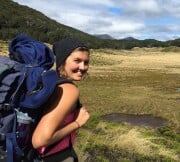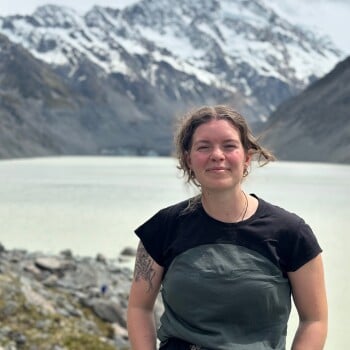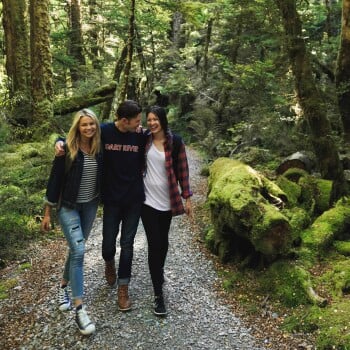- About Us
-
Trips
-
 Kiwi-Style Hiking
Kiwi-Style Hiking
-
 Great Walks
Great Walks
-
 Hiking Tours
Hiking Tours
-
Alpine Hikes
-
Custom Groups
- Huayhuash Trek
- Family Northern Explorer
- Family Southern Explorer
- Lake Waikaremoana Hike
- Women's Custom Tours
- Women's Southern Wilderness
- Coast, Canyons and Mountains
- Coastal Wanderer Custom Tour
- Don't Cross the Ladies
- Secret South Custom Tour
- Tekapo Hike
- West Coast Custom Tour
- World Heritage Custom Tour
-
- Blog
- Shortlist
- About Us
- Trips
- Blog
- Shortlist

Jan 5, 2024
Coming from a country where the lack of time management in the morning can be compensated by hitting the gas pedal on the ‘Autobahn’, travellers to New Zealand often learn the hard way how different driving in New Zealand can be. It’s all about the patience.
 Driving on the left side of the road
Driving on the left side of the road
Driving in New Zealand in your own or a rental car might be a bit different than driving in your home country: All cars drive on the left side of the road (the ones that don’t are clearly lost tourists).
You might it a bit uncomfortable in the beginning, believe it or not, is when sitting in the passenger seat.
One thing you may struggle with, is the switch of handle for the indication light and windshield wiper – you might indicate your left turn solely by turning on the windshield wipers.
Self-driving - or getting there eventually
It's important to note that 90% of New Zealand's state highway network are two-lane rural and peripheral urban roads. There are very few motorways, so you'll need to be prepared for narrow and often winding roads. Driving on two-lane highways (one lane of vehicles driving in either direction) you have to schedule a little bit more time for your ride. You never know when you’ll be stuck behind a truck, or a (really) slow driver. You'll need to know how to safely overtake using the righthand lane, otherwise, you can keep your distance, and keep snacks on hand for a slower-than-expected trip.
One Lane Bridges
You my not know, but some roads in Aotearoa have one-lane bridges on them. Yes, that's right, at these bridges, vehicles travelling in one direction have to give way to vehicles going in the other direction. All one-lane bridges are clearly signposted, showing who should give way. Just another thing to consider when self-driving!
 Just because it looks close does not mean it is
Just because it looks close does not mean it is
Don't make the mistake of calculating the distance between certain places solely by looking on a map. Some people assume the drive between Auckland and Christchurch is easily doable in a day. Big no! Looking at the actual drivable route this distance unfolded differently. Check Google maps beforehand and add one or two hours to the suggested driving time (especially in the busy summer months).
Buses
The main towns are connected by a reasonably priced bus network. The frequency does however vary per location and seasons, with some cities only having one departure a day. So in case you are under time pressure of getting somewhere check the timetable beforehand, otherwise you might be stuck in a city. InterCity Coachlines operate city-to-city, there are also ‘hop-on hop-off’ bus companies operating all over New Zealand.
Trains
There are major train lines running between Auckland and Wellington (Northern Explorer), between Christchurch and Greymouth (TranzAlpine) and between Picton and Christchurch (Coastal Pacific).

Bicycle
New Zealand offers numerous routes for bike enthusiasts. Check out this website and plan your cross country cycle route. If you are planning to bike from city to city be aware that you’ll have to bike next to the highway. You have to avoid motorways, as cyclist are not allowed on these.
Hitchhiking
Being on budget, or just in for an adventure you might consider hitchhiking. Your chances of getting picked up are quite good in New Zealand, with just a few major highways connecting the main points of interest. Hitchhiking to rural areas might be a bit harder and more time-consuming. But you know what they say, either you’ve got the time or you’ve got the money. Be sure to stay safe!
Domestic flights
If you spend two weeks or less in the New Zealand, consider to cover longer distances taking a short domestic flight. This way you can avoid long car journeys and still see all the locations on your bucket list. If you need a few tips on booking flights check out our blog.







